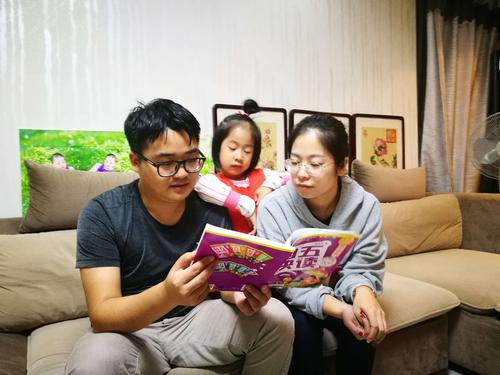iasked是什么意思ked在线翻译读音例-宴的拼音和组词
2023年4月19日发(作者:pep三年级英语上册)附录A
3 Image Enhancement in the Spatial Domain
The principal objective of enhancement is to process an image so that the result
is more suitable than the original image for a specific application. The word specific
is important, because it establishes at the outset than the techniques discussed in this
chapter are very muc耸人听闻造句 h problem oriented. Thus, for example, a method that is quite
useful for enhancing X-ray images may not necessarily be the best approach for
enhancing pictures of Mars transmitted by a space probe. Regardless of the method
used .However, image enhancement is one of the most interesting and visually
appealing areas of image processing.
Image enhancement approaches fall into two broad categories: spatial domain
methods and frequency domain methods. The term spatial domain refers to the image
plane itself, and approaches in this category are based on direct manipulation of pixels
in an image. Fourier transform of an image. Spatial methods are covered in this
chapter, and frequency domain enhancement is discussed in Chapter ement
techniques based on various combinations of methods from these two categories are
not unusual. We note also that many of the fundamental techniques introduced in this
chapter in the context of enhancement are used in subsequent chapters for a variety of
other image processing applications.
There is no general theory of image enhancement. When an image is processed
for visual interpretation, the viewer is the ultimate judge of how well a particular
method works. Visual evaluation of image quality is a highly is highly subjective
process, thus making the definition of a “good image” an elusive standard by which to
compare algorithm performance. When the problem is one of processing images for
machine perception, the evaluation task is somewhat easier. For example, in dealing
with a character recognition application, and leaving aside other issues such as
computational requirements, the best image processing method would be the one
yielding the best machine recognition results. However, even in situations when a
clear-cut criterion of performance c长江水文网官网 an be imposed on the problem, a certain amount of
trial and error usually is required before a particular image enhancement approach is
selected.
3.1 Background
As indicated previously, the term spatial domain refers to the aggregate of pixels
composing an image. Spatial domain methods are procedures that operate directly on
these pixels. Spatial domain processes will be denotes by the expression
gx,yTf(x,y) (3.1-1)
where f(x, y) is the input image, g(x, y) is the processed image, and T is an
operator on f, defined over some neighborhood of (x, y). In addition, T can operate on
a set of input images, such as performing the pixel-by-pixel sum of K images for
noise reduction, as discussed in Section 3.4.2.
The principal approach in defining a neighborhood about a point (x, y) is to use a
square or rectangular subimage area centered at (x, y).The center of the subimage is
moved from pixel to starting, say, at the top left corner. The operator T is applied at
each location (x, y) to yield the output, g, at that location. The process utilizes only
the pixels in the area of the image spanned by the neighborhood. Although other
neighborhood shapes, such as approximations to a circle, sometimes are used, square
and rectangular arrays are by far the most predominant because of their ease of
implementation.
The simplest from of T is when the neighborhood is of siz明月几时有王菲歌词 e 11 (that is, a single
pixel). In this case, g depends only on the value of f at (x, y), and T becomes a
gray-level (also called an intensity or mapping) transformation function of the form
sT(r)
(3.1-2)
where, for simplicity in notation, r and s are variables denoting, respectively, the
grey level of f(x, y) and g(x, y)at 折腾的拼音 any point (x, y).Some fairly simple, yet powerful,
processing approaches can be formulates with gray-level transformations. Because
enhancement at any point in an image depends only on the grey level at that point,
techniques in this category often are referred to as point processing.
Larger neighborhoods allow considerably more flexibility. The general approach
is to use a function of the values of f in a predefined neighborhood of (x, y) to
determine the value of g at (x, y). One of the principal approaches in this formulation
is based on the use of so-called masks (also referred to as filters, kernels, templates, or
windows). Basically, a mask is a small (say, 33) 2-Darray, in which the values of the
mask coefficients determine the nature of the type of approach often are referred to as
mask processing or filtering. These concepts are discussed in Section 3.5.
3.2 Some Basic Gray Level Transformations
We begin the study of image enhancement techniques by discussing gray-level
transformation functions. These are among the simplest of all image enhancement
techniques. The values of pixels, before and after processing, will be denoted by r and
s, respectively. As indicated in the previous section, these values are related by an
expression of the from s = T(r), where T is a transformation that maps a pixel value r
into a pixel value s. Since we are dealing with digital quantities, values of the
transformation function typically are stored in a one-dimensional array and the
mappings from r to s are implemented via table lookups. For an 8-bit environment, a
lookup table containing the values of T will have 256 entries.
As an introduction to gray-level transformations, which shows three basic types
of functions used frequently for image enhancement: linear (negative and identity
transformations), logarithmic (log and inverse-log transformations), and power-law
(nth power and nth root transformations). The identity function is the trivial case in
which out put intensities are identical to input intensities. It is included in the graph
only for completeness.
3.2.1 Image Negatives
The negative of an image with gray levels in the range [0, L-1]is obtained by
using the negative transformation show shown, which is given by the expression
sL1r
(3.2-1)
Reversing the intensity levels of an image in this manner produces the
equivalent of a photographic negative. This type of processing is particularly suited
for enhancing white or grey detail embedded in dark regions of an image, especially
when the black areas are dominant in size.
3.2.2 Log Transformations
The general from of the log transformation is
sclog(1r)
(3.2-2)
Where c is a constant, and it is assumed that r ≥0 .The shape of the log curve
transformation maps a narrow range of low gray-level values in the input image into a
wider range of output levels. The opposite is true of higher values of input levels. We
would use a transformation of this type to expand the values of dark pixels in an
image while compressing the higher-level values. The opposite is true of the inverse
log transformation.
Any curve having the general shape of the log functions would accomplish this
spreading/compressing of gray levels in an image. In fact, the power-law
transformations discussed in the next section are much more versatile for this purpose
than the log transformation. However, the log function has the important characteristic
that it compresses the dynamic range of image characteristics of spectra. It is not
unusual to encounter spectrum values that range from 0 to 106 or higher. While
processing numbers such as these presents no problems for a computer, image display
systems generally will not be able to reproduce faithfully such a wide range of
intensity values .The net effect is that a significant degree of detail will be lost in the
display of a typical Fourier spectrum.
3.2.3 Power-Law Transformations
Power-Law transformations have the basic from
scr
(3.2-3)
Where c and y are positive constants .Sometimes Eq. (3.2-3) is written as to
account for an offset (that is, a measurable output when the input is zero). However,
offsets typically are an issue of display calibration and as a result they are normally
ignored in Eq. (3.2-3). Plots of s versus r for various values of y are shown in Fig.3.6.
As in the case of the log transformation, power-law curves with fractional values of y
map a narrow range of dark input values into a wider range of output values, with the
opposite being true for higher values of input levels. Unlike the log function, however,
we notice here a family of possible transformation curves obtained simply by varying
y. As expected, we see in Fig.3.6 that curves generated with values of y>1 have
exactly the opposite effect as those generated with values of y<1. Finally, we note
that Eq.(3.2-3) reduces to the identity transformation when c = y = 1.
A variety of devices used for image capture, printing, and display respond
according to as gamma[hence our use of this symbol in Eq.(3.2-3)].The process used
to correct this power-law response phenomena is called gamma correction.
Gamma correction is important if displaying an image accurately on a computer
screen is of concern. Images that are not corrected properly can look either bleached
out, or, what is more likely, too dark. Trying to reproduce colors accurately also
requires some knowledge of gamma correction because varying the value of gamma
correcting changes not only the brightness, but also the ratios of red to green to blue.
Gamma correction has become increasingly important in the past few years, as use of
digital images for commercial purposes over the Internet has increased. It is not
Internet has increased. It is not unusual that images created for a popular Web site will
be viewed by millions of people, the majority of whom will have different monitors
and/or monitor settings. Some computer systems even have partial gamma correction
built in. Also, current image standards do not contain the value of gamma with which
an image was created, thus complicating the issue further. Given these constraints, a
reasonable approach when storing images in a Web site is to preprocess the images
with a gamma that represents in a Web site is to preprocess the images with a gamma
that represents an “average” of the types of monitors and computer systems that one
expects in the open market at any given point in time.
3.2.4 Piecewise-Linear Transformation Functions
A complementary approach to the methods discussed in the previous three
sections is to use piecewise linear functions. The principal advantage of piecewise
linear functions over the types of functions we have discussed thus far is that the form
of piecewise functions can be arbitrarily complex. In fact, as we will see shortly, a
practical implementation of some important transformations can be formulated only
as piecewise functions. The principal disadvantage of piecewise functions is that their
specification requires considerably more user input.
Contrast stretching
One of the simplest piecewise linear functions is a contrast-stretching
transformation. Low-contrast images can result from poor illumination, lack of
dynamic range in the imaging sensor, or even wrong setting of a lens aperture during
image acquisition. The idea behind contrast stretching is to increase the dynamic
range of the gray levels in the image being processed.
Gray-level slicing
Highlighting a specific range of gray levels in an image often is desired.
Applications include enhancing features such as masses of water in satellite imagery
and enhancing flaws in X-ray images. There are several ways of doing level slicing,
but most of them are variations of two basic themes. One approach is to display a high
value for all gray levels in the range of interest and a low value for all other gray
levels.
Bit-plane slicing
Instead of highlighting gray-level ranges, highlighting the contribution made to
total image appearance by specific bits might be desired. Suppose that each pixel in
an image is represented by 8 bits. Imagine that the image is composed of eight 1-bit
planes, ranging from bit-plane 0 for the least significant bit to bit-plane 7 for the most
significant bit. In terms of 8-bit bytes, plane 0 contains all the lowest order bits in the
bytes comprising the pixels in the image and plane 7 contains all the high-order bits.
3.3 Histogram Processing
The histogram of a digital image with gray levels in the range [0, L-1] is a
discrete function , where is the kth gray level and is the number of pixels in
the image having gray level . It is common practice to pixels in the image, denoted
by n. Thus, a normalized histogram is given by , for , Loosely speaking, gives
an estimate of the probability of occurrence of gray level . Note that the sum of all
components of a normalized histogram is equal to 1.
Histograms are the basis for numerous spatial domain processing techniques.
Histogram manipulation can be used effectively for image enhancement, as shown in
this secti行路难其一原文翻译 on. In addition to providing useful image statistics, we shall see in
subsequent chapters that the information inherent in histograms also is quite useful in
other image processing applications, such as image compression and segmentation.
Histograms are simple to calculate in software and also lend themselves to economic
hardware implementations, thus making them a popular tool for real-time image
processing.
附录B
第三章 空间域图像增强
增强的首要目标是处理图像,使其比原始图像格式和特定应用。
这里的“特定”很重要,因为它一开始就确立了本章多讨论技术是面向问题
的。
例如,一种很合适增强X射线图像的方法,不一定是增强有空间探测器发
回的火星图像的最好方法。暂且不谈所用方法,图像增强本身就是图像处理中最
具有吸引力的领域之一。
图像增强的方法分为两大类:空间域方法和频域方法。“空间域”一次是指图
像平面自身,这类方法是以对图像的像素直接处理恩基础的。“频域”处理技术足
以修改图像的傅氏变换为基础的。空间域方法在这一章讲述,频域增强将在第四
章讨论。以这两类方法的各种结合为基础的增强技术是不常见的。我们也注意到,
本章关于增强的许多基本技术在后续章节里的其他图像处理应用中也会用到。
图像增强的通用理论是不存在的。当图像为视觉解释而进行处理时,有观察
者最后判断特定方法的效果。图像质量的视觉评价是一种高度主观的过程,因此,
定义一个“理想图像”标准没通过这个标准去比较算法的性能。当为机器感知而处
理图像时,这个评价任务就会容易一些。例如,在一个特征识别的应用中,不考
虑像计算要求这些问题,最好的图像处理方法是一种能得到最好的机器可识别结
果的方法。无论怎样,甚至在把一个明确的性能标准加于这个问题的情况下,在
选择特定的图像增强方法之前,常常需要一个实验和误差的特定量。
3.1背景知识
如前所述,“空间域增强”是指增强构成图像的像素。空间域方法是直接对这
些像素操作的过程。空间域处理可由下式定义:
gx,yTf(x,y)
(3.1-1)
其中f(x, y)是输入图像,g(x, y)是处理后的图像,T是对f的一种操作,其
定义在(x, y)的邻域。另外,T能对输入图像集进行操作,例如,为减少噪音而对
K幅图像进行逐像素的求和操作,如3.4.2节所讨论的。
定义一个点(x, y)邻域的主要方法是利用中心在(x, y)点的正方形货矩形子图
像。子图像的中心从一个像素向另一个像素移动,比如说,可以从左上角开始。
T操作应用到每一个(x, y)位置得到该店的输出g。这个过程仅仅用在小范围邻域
里的图像像素。尽管像近似于圆的其他邻域形状有时也用,但正方形和矩形列阵
因其容易执行操作而占主导地位。
T操作最简单的形式是邻域为11的尺度(即单个像素)。在这种情况下,g
仅仅依赖于f在(x, y)点的值,T操作成为灰度级变换函数(也叫做强度映射),形
成为:
sT(r)
(3.1-2)
这里,为简便起见,令r和s是所定义的变量,分别是f(x, y)和g(x, y)在任
一点(x, y)的灰度级。有的相当简单,却有很大作用,处理方法可以用灰度变换
加以公式化。因为在图像任意点的增强仅仅依赖于该点的灰度,这类技术常常是
指点处理。
更大的邻域会有更多的灵活性。一般的方法是,利用点(x, y)事先定义的邻
域里的一个f值的函数来决定g在(x, y)的值,其公式化的一个主要方法是以利用
所谓的模板(也指滤波器、核、掩模或窗口)为基础的。从根本上说,模板是一个
小的(即33)二维阵列,模板的系数值决定了处理的性质,如图像尖锐化等。以
这种方法为基础的增强技术通常是指模板处理或滤波。这些概念将在3.5节讨论。
3.2某些基本灰度变换
以讨论灰度变换函数开始研究图像增强技术,这些都属于所有图像增强技术
最简单的一类。处理前后的像素的值用r和s分别定义。如前节所述,这些值与
s = T(r)表达式的形式有关,这里的T是把像素的值r映射到值s的一种变换。由
于处理的是数字量,变换函数的值通常储存在一个一维阵列中,并且从r到s的
映射通过查表得到。对于8比特环境,一个包含T值的可查阅的表需要有256
个记录。
正如对灰度变换介绍的那样,它显示了图像增强常用的三个基本类型函数:
线性的(正比和反比)、对数的(对数和反对数变换)、幂次的(n次幂和n次方根变
换)。正比函数式最一般的,其输出亮度与输入亮度可互换,唯有它完全包括在
图形中。
3.2.1 图像反转
灰度级范围为[0,L-1]的图像反转可由反转变换获得,表示为教组词 :
sL1r
(3.2-1)
用这种方式倒转图像的前度产生图像反转的对等图像。这种处理尤其适用于
增强嵌入于图像暗色区域的白色或灰色细节,特别是当黑色面积占主导地位时。
3.2.2 对数变换
对数变换的一般表达式为:
sclog(1r)
(3.2-2)
其中c是一个常数,并假设r≥0。此种变换使窄带低灰度输入图像值映射为
一宽带输出值。相对的是输入灰度的高调整值。可以利用这种变换来扩展被压缩
的高值图像中的按像素。相对的是反对数变换的调整值。
一般对数函数的所有曲线都能完成图像灰度的扩散/压缩。事实上飞,就此
目的而言,下节将讨论的幂次规则变换比对数变换更加灵活。不管怎样,对数函
数有它重要的特征,就是它在很大程度上压缩了图像像素值的动态范围,其应用
的一个典型例子就是傅里叶频谱,他的像素值有很大的动态范围,这将在第四章
中讨论。现在,我们只注意图像频谱的特征。频谱值的范围从0到106过更高的
情况是不常见的。当计算机处理像这样的无误数字时,图像显示系统通常不能如
实地再现如此大范围的强度值。最后的效果是有很多的细节会在典型的傅里叶频
谱显示时丢失。
3.2.3 幂次变换
幂次变换的基本形式为:
scr
(3.2-3)
其中c和y为正常数。有事考虑到偏移量(即当输入为0是的可测量输出),
式(3.2.3)也写做 。不管怎样,偏移量通常是显示标定的衍生,并且一般在式(3.2.3)
中忽略掉。作为r的函数,s对于y的各种值绘制的曲线。如对数变换的情况一
样,幂次曲线中y的部分值把输入窄带暗值映射到宽带输出值。相反,输入高值
时也成立。然而,不想对数函数,我们注意到这里随着y值的变换将简单地得到
一族变换曲线。如预期的一样,我们看到其中y>1的值和y<1的值产生的曲线
有相反的效果。最后,我们注意式(3.2.3)当c = y 1时,将简化为正比变换。
用于图像获取、打印和显示的各种装置根据幂次规律进行响应。习惯上,幂
次等式中的指数是指伽马值[因此在式(3.2-3)中用到这一符号]。用于修正幂次响
应现象的过程称作伽马校正。
如果涉及在计算机屏幕上精确显示图像,伽马校正是很重要的。不恰当的图
像修正会被漂白或变得更暗。试图精确再现颜色也需要伽马校正的一些知识,这
是因为改变伽马校正值不仅可改变亮度,还可改变红、绿、蓝的比率。对于成百
上千万的网民(这些人的绝大多数都有不同的监视器或监视器设置)浏览的流行
网站,为其创作图像是经常的事。有些计算机系统甚至配有部分伽马校正。同时,
目前的图像标准没有包括创作图像的伽马校正值,因此,问题更加复杂化了。由
于这些限制,当在网站中存储图像时,一个可能的方法就是用伽马值对图像进行
预处理,此伽马值表示了在开放的市场中,在任意给定时间点,各种型号的监视
器和计算机系统所被期望的“平均值”。
3.2.4 分段线性变换函数
对前面三小节中所讨论方法的补充是分段线性函数。其相比前面所讨论函数
的主要优势在于它的形式可任意合成。事实上,可以立刻看到,有些重要变换的
实际应用可由分段线性函数描述。分段线性函数的主要缺点是其需要更多的用户
输入。
对比拉伸
最简单的分段线性函数之一是对比拉伸变换。低对比度图像可由照明不足、
成像传感器动态范围太小,甚至在图像获取过程中透光镜光圈设置错误引起。对
比拉伸的思想是提高图像处理时灰度级的动态范围。
灰度切割
在图像中提高特定灰度范围的亮度通常是必要的,其应用包括增强特征(如
卫星图像中大量的水)和增强X射线图中的缺陷。有许多方法可以进行灰度切割,
但是,它们中的大多数是两种基本方法的变形。其一就是在所关心的范围内为所
有灰度指定一个较高值,而为其他灰度指定一个较低值。
位图切割
代替提高灰度范围的亮度,而通过对特定位提高亮度,对整幅图像质量仍然
是有贡献的。设图像中的每一个像素都由8比特表示,假设图像是由8个1比特
平面组成,其范围从最低有效位的位平面0到最高有效位的位平面7。在8比特
字节中,平面0包含图像中像素的最低位,而平面7则包含最高位。
3.3直方图处理
灰度级为[0,L-1]范围的数字图像的直方图是离散函数 ,这里 是第k级灰
度, 使图像中灰度级为 的像素个数。经常以图像中像素的总数(用n表示)来除
它的每一个值得到归一化的直方图。因此,一个归一化的直方图由 给出,这里 。
简单地说, 给出了灰度级为 发生的概率估计值。注意,一个归一化的直方图其
所有部分之和应等于1.
直方图是多种空间域处理技术的基础。直方图操作能有效地用于图像增强,
如本节所示。除了提供有用的图像统计资料,在以后的章节会看到直方图固有的
信息在其他图像处理应用中也是非常有用的,如图像压缩与分割。直方图在软件
中易于计算,也适用于商用硬件设备,因此,他们成为了实时图像处理的一个流
行工具。
圆蛛的英文译语怎么说-服饰色彩
更多推荐
predominant是什么意思dominant在线翻译读音








发布评论